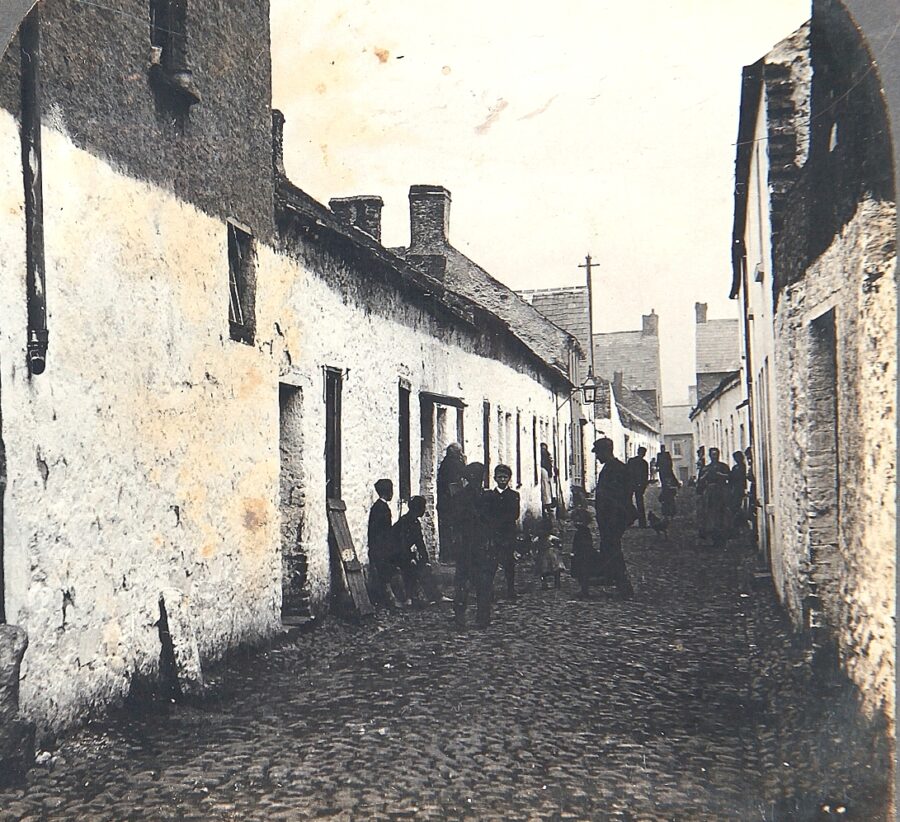
Kieran’s Our City, Our Town Article,
Cork Independent, 19 January 2023
Recasting Cork: A Vision for Refuse
Cork Corporation records from one hundred years contain very detailed reports on a myriad of topics. One report, which was published in January 1923 in the Cork Examiner, was a report on street scavenging and cleaning.
The report outlines that the system for refuse collection for the City of Cork was antiquated and had consequently given rise to many complaints by the citizens. The Corporation’s Public Works Committee wished to introduce a reorganisation of the dumping of refuse, mud and manure and to move towards a better efficient and more economic service.
There was difficulty to obtain satisfactory dumping grounds for accumulated refuse. The procurable sites in the city’s suburbs were often situated at too great a distance, while the passages leading to some of these grounds were steep and ill-kept. The contents of each cart were on average more than about 12 cwts in weight.
The collection and removal of the street mud, together with the removal of the street manure, was under the control of the Public Works Committee. The treatment of the domestic scavenging was placed under the jurisdiction of the Public Health Committee. Trade scavenging or refuse produced by traders was meant to be carried out by the inhabitants of the various shops and houses, but for the most part was directed to be carried out by the Public Works Committee. This Committee often struggled to cope with the amount of trade refuse and hence the overall result was disorganised.
The report recommended that there should be in the future one combined central committee of public works and public health, which would he held responsible for the competency of the whole refuse work programme. In addition the report proposed that the traders should pay a cost towards an efficient facility; “By this means it will be found that a systematic collection of paper, boxes, etc., can be satisfactorily dealt with, and the present exposure of such rubbish which, flies about the streets in windy weather obviated to the benefit and health of the citizens”.
The street cleansing staff worked across six defined geographical areas of the city with 40 men employed across winter, 41 men during the summer with 17 cart carriers in the winter and 14 cart carriers in the summer. Each of the areas included a ganger.
The report outlined that there was a certain number of older men who were employed and who had devoted years of work in the service of the Corporation. However, by reason of their ages they were unable to carry out a full day’s work. The report suggested that such men should be distributed amongst the younger men in the various areas, so as to support the spread of the heavier work across more able and younger staff members.
The lane-cleaning staff across five city areas comprised 25 men who swept the lanes the lanes of the city and collected the street manure. Eleven cart carriers assisted them in the taking away of what these latter staff collected. They were all under the direction of one ganger in each area.
The total number of loads of mud removed per month from the city’s divisional work area comprised 15,000 loads at 12 cwts, which came to 9,000 tons per annum. It was estimated that 50-60 tons of refuse excluding the mud were daily collected for dumping across the city’s suburbs, historically in a controlled way.
The report suggested that dumping barges could be placed upon the two branches of the River Lee and the city could be divided into suitable sections served by the necessary men and carriers to collect and convoy the material to the barges. The barges when filled could then be possibly carried down the river to one overall controlled tipping ground, which was possibly exist between Tivoli and Dunkettle, which at that time were going . The proposal noted: “If we assume that we must provide for the daily removal of 60 tons, and that such removal necessitates two sites on the North river and two sites on the South river, the capacity of each barge would be 14-15 tons, or even, perhaps, 20 tons, which would only entail a small vessel”.
If the barge suggestion was to be entertained, the report highlighted that two important points needed to be resolved – (1) the dust, which would arise when unloading into the barges, and (2) the rise and fall of the tide during the loading periods within the city’s quaysides. It would be necessary to furnish the barges with proper covers and convey the refuse from the carts into the barges through “covered shoots, constructed telescopically. in order to automatically meet the rise and fall of the tide, which would be of daily occurrence”.
The report detailed that any reasonable capital outlay necessary to introduce a successful method of dumping mud at a controlled space would cost roughly £17,000. In explaining the report, Mr Joseph F Delaney, City Engineer, said that the whole point in the scheme was the changing of the extent system of dumping; “where at present, loads were carried to far away places on the outskirts of the city, it was proposed to remove them to quayside stations, and thence have them convoyed down the river in barges to Tivoli, or some other suitable dumping ground”.
The proposed central dump scheme was debated amongst Corporation Council members and sites at Tivoli and Dunkettle were visited. Nothing came out of the proposals immediately though, but the idea was indirectly green lit that the city should have a controlled dumping ground for all refuse, manure and mud collected. In 1934, one was established adjacent the Carrigrohane Road, which remained open until 1975, until the former landfill at Kinsale Road replaced it.
Caption:
1185a. Slum conditions in Kelly Street, Cork, formerly off Shandon Street c.1900 (source: Cork Public Museum).